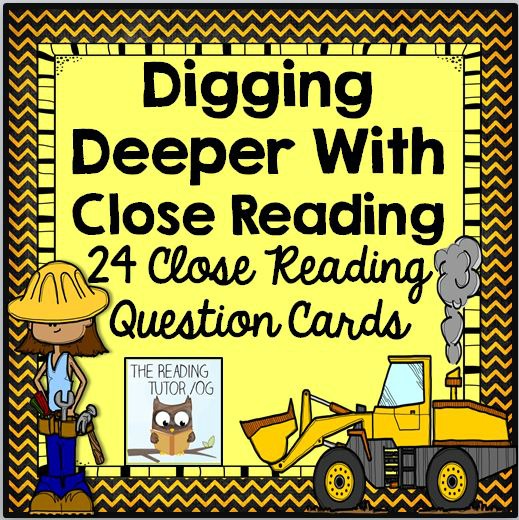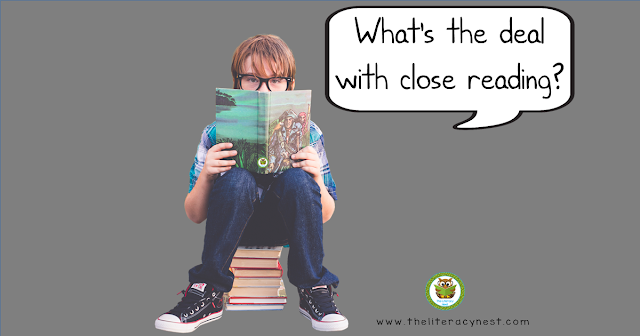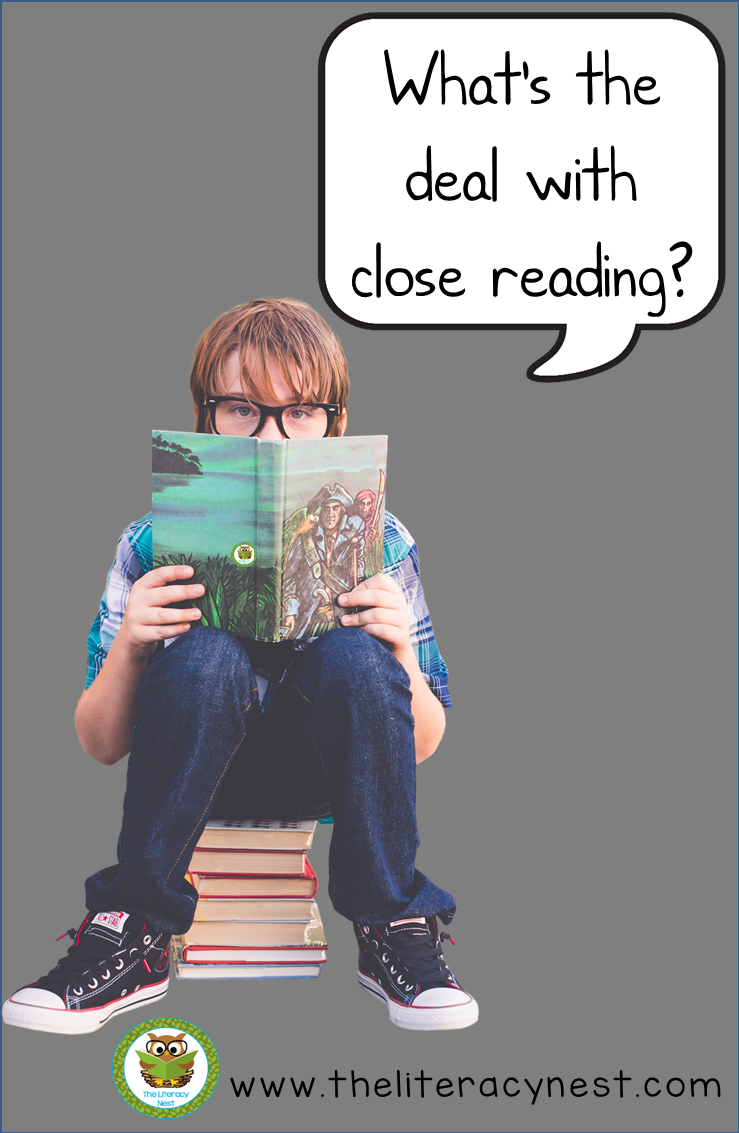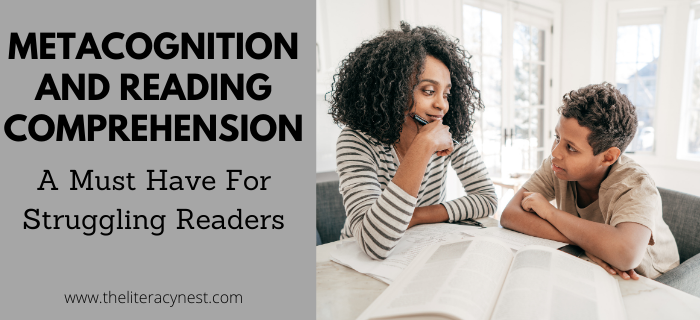Digging Deeper Into Reading: Helpful Tips For Close Reading
Welcome to my blog! I’d like to chat about close reading today. The Common Core State Standards and PARCC (Partnership for Assessment of Readiness for College and Careers) has brought close reading into the forefront of every teacher’s mind. You may be wondering:
- What is close reading?
- How should you implement it in your classroom?
- Is it just another reading strategy? Where can I gather the best resources to use?
I’d like to take the time to share some of my own findings and insights about close reading from the research I’ve read. Hopefully this will provide some clarity and clear up misconceptions you may have. While I understand that for some people, discussing the CCSS and its push for close reading may be a contentious subject, my stance is to shed light on utilizing it effectively with all readers.
Close reading isn’t new. The only thing that makes it feel new is that the standards are asking younger readers to do it too. Students can close read successfully with the appropriate guidance from classroom teachers, which means teachers need professional development on it as well.
First, let’s take a look at what PARCC defines as close reading for teachers.
“Close, analytic reading stresses engaging with a text of sufficient complexity directly and examining meaning thoroughly and methodically, encouraging students to read and reread deliberately. Directing student attention on the text itself empowers students to understand the central ideas and key supporting details. It also enables students to reflect on the meanings of individual words and sentences; the order in which sentences unfold; and the development of ideas over the course of the text, which ultimately leads students to arrive at an understanding of the text as a whole.” (PARCC, 2011, p. 7)
In a nutshell, close reading of a text asks students to do the following:
-
Carefully look at the meaning of the text in series of rereads.
-
Give attention to ideas, supporting details, and central themes.
-
Reflect on meanings of sentences and words. (the language of text)
-
Not only reflect on their own thinking (metacognition), but reflect on other’s thinking. (the author!)
-
Close reading isn’t about any one technique, but rather arriving at a goal as the reader.(Shanahan, 2013)
-
Close reading can be flexible. Three or four reads of the text every time may not be necessary, and not every text is meant to be closely read. One recommendation is for teachers to choose one challenging text to close read for every teaching unit.
-
Questioning is key. Teachers need to be VERY familiar with the text and take time to develop questions for each repeated read that will get students traveling to a new place with their thinking. These questions should also help the reader arrive at a deeper comprehension of the text.
-
Do consider your text selection. If we’re going to ask ALL of our students (of ALL reading abilities) to conduct repeated reads of more challenging text, plus reflect on it, then perhaps choosing shorter text is best. Using shorter text means you will not only have a greater chance of reaching a larger audience with diverse reading abilities, but build more reading independence. Cautionary tale: There is such a thing that happens in classrooms that I like to call “doing a book to death.” It’s the numerous book activities, extensions and ultra-long think alouds that are sometimes in danger of detracting away from true engagement with the text. Close reading lessons stick to a central focus: deep comprehension.
-
Do consider the appropriateness of close reading for the intended audience. School administration may be asking that students in every grade level participate in close reading lessons. Do kindergartners and first graders need to be closely reading text? I believe strengthening a child’s listening comprehension should be the goal at this stage of reading development. There are few texts geared for children of these primary grades that they could be closely reading with independence. There are however, plenty of challenging books, and short stories of different genres and poetry that a teacher could read closely to a class and model as “close listening”(Shanahan, 2013). It’s still valuable, and you’re setting a strong reading foundation by paving the way for future grades where reading silently and independently is the goal.
-
Do consider the types of questions you ask during a close reading lesson. If you use a three read model, then here are a few tips: First Read: Key Ideas and Details Make sure students know what the text is saying at this point. You can do a brief retell, name main ideas/supporting details, even predicting can be fine, especially for challenged readers. Second Read: Craft and Structure Get down to the nitty gritty with this read. Examine how the text is working, how it’s organized, the literacy devices used, the author’s word choice, how effective is the language used or the facts presented in the text. Third Read: Integration of Knowledge and Ideas: By now, the reader is digging even deeper to figure out where the author has taken them, and what they are saying to them. Examine author’s purpose, evaluate the text for quality and effectiveness. You can even use the third read as a chance to share connections students made as long as the connection is closely tied to the text and not a distraction. This may seem like it would take several days to complete. That is why it’s suggested to select one complex text to closely read per unit. Looking to see examples of questions for close reading? Here’s a set of close reading question cards that I use with children that encourage deep focus. You can view them here:

Close Reading Question Cards -
Do decide how many reads the text really deserves. Get to know the text you want your students to read very well. There isn’t a blanket rule that states you need to read and engage with the text three times for close reading, although that is a common model many teachers use. Some articles, poems, and short stories out there may not need three reads by students in order to get to the heart of what an author is trying to convey.
-
Do release most of the responsibility onto the reader. I’ve observed several VERY long think aloud strategy lessons in classrooms in the past. At the risk of sounding brutally honest, they become excruciating not only to watch, but for the children sitting there. Close reading requires a great deal of responsibility and independence on behalf of the reader. If you the teacher are spending the majority of the lesson modeling strategies in a think aloud, this isn’t close reading. Take special care to separate strategy lessons from close reading lessons. By the time your students are close reading a text, they should already be able to use certain strategies that you’ve already taught them on their own.
-
Do consider having tools on hand for students like an anchor chart displayed or a thinkmark passed out with codes to use when marking the text. Using codes while reading increases more interaction or engagement with the text and it’s a quick assessment to see what students are thinking while reading. Certainly it is within EVERY teacher to want our children to experience success. Release more responsibility, provide the tools and the appropriate text and this can be accomplished. You’ll have richer classroom discussions as a result too.
-
Do use different genres for close reading. “It’s all about non-fiction now,” many teachers say. Close reading does not have to be just reading works of non-fiction, and according to PARCC documents, it shouldn’t be. Choose poems, short stories, and traditional literature such as folktales, fables, myths and legends. If a student is only reading one genre the majority of the time, it stands to reason they will become good readers…of that genre. Please balance your text choices carefully and remember to consider all reading abilities.(Note: Some resources below may not include an extensive list or articles I’ll be working on a second post in the future with suggested reading resources by grade level.)
-
Do set a purpose for reading and/or provide a brief preview for your students if you think it will help them engage with the text more effectively. Many say not to do this before close reading, but rather, have students go in fresh. I believe teachers can offer an appropriate introduction to a particular text without discussing the salient points you’ll want them to discover on their own. Furthermore, we know that setting a purpose for reading is just best teaching practice. It’s well researched and highly recommended . You may not be offering the same background-building experiences as you would for a genre study, novel unit, or new chapter in a textbook but purpose setting could be stating what the goal of reading is, what they’ll be looking for while they read, and the tools they should use while reading.
Credits:
http://www.shanahanonliteracy.com/2012/06/what-is-close-reading.html
http://www.criticalthinking.org/pages/the-art-of-close-reading-part-one/509
http://www.readwritethink.org/professional-development/professional-library/close-reading-elementary-schools-a-31027.html
http://www.scholastic.com/teachers/top-teaching/2013/04/investigating-nonfiction-part-2-digging-deeper-close-reading
http://www.parcconline.org/mcf/english-language-artsliteracy/reading-complex-texts
For further information on close reading, here are some online resources to check out:
http://www.achievethecore.org/page/752/featured-lessons
http://www.shanahanonliteracy.com/2012/06/what-is-close-reading.html
http://www.mhecommoncoretoolbox.com/close-reading-and-the-ccss-part-1.html
http://www.criticalthinking.org/pages/the-art-of-close-reading-part-one/509
http://www.readwritethink.org/professional-development/professional-library/close-reading-elementary-schools-a-31027.html
http://www.scholastic.com/teachers/top-teaching/2013/04/investigating-nonfiction-part-2-digging-deeper-close-reading







Thank you, Emily, for this informative post! Close Reading is a very HOT topic in my school system this year and your comments and thoughts are very helpful to further understand Close Reading and how to teach my students. The online resources section of your post (at the end) was also very helpful. Thank You for your help and dedication to education!
I'm so glad you had a chance to read my post! Thank you so much for your thoughtful comments.